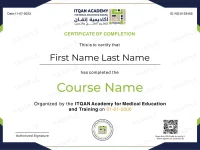
Project Management Using Agile Methodology and Scrum
- Next Course:
This course provides an introduction to Agile methodology and the Scrum framework, which is ideal for managing projects in fast-paced, complex environments like healthcare. Scrum emphasizes flexibility, collaboration, and delivering value to customers early and often. Through this course, medical professionals will learn how to apply Scrum principles to improve project management within healthcare settings, ensuring timely delivery of services and solutions.
Learning Objectives
By the end of this course, participants will:
- Understand the core principles of Agile methodology and the Scrum framework.
- Learn how to effectively plan and manage projects using Scrum.
- Be able to conduct Scrum ceremonies, including sprint planning, daily scrums, sprint reviews, and retrospectives.
- Improve communication and collaboration within teams through Scrum practices.
- Apply Scrum to manage healthcare projects, ensuring timely and efficient delivery of outcomes.
Register Your Interest
If applicant is individual, then
If applicant is organisation
FAQ
How long is the course, and is it self-paced?
The course is two days long, with a total of 13 hours spread across those two days.
Are there any prerequisites for enrolling in the course?
The course is open to individuals working in the public health field.
Is there a certification upon completion of the course?
Yes, participants who successfully complete the course, including assessments and practical components, will receive a certificate of completion. This certificate can be a valuable addition to your professional portfolio.
How Can I Get a Completion Certificate?
- Attend the course.
- Pass the required assessment.
- Participate in Case scenarios, quizzes and discussion
How can I enroll in the course?
To enroll, Follow the registration process. If you encounter any difficulties or have further questions, our support team is available to assist you.
Learner Reviews




Case Studies